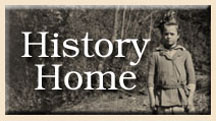

The Founding of Pi Beta Phi Settlement School: Page 2
All told, the emissaries traveled to three different communities in East Tennessee: Madisonville and Tellico Plains, both of which were in Monroe County; and Sevierville, the county seat of Sevier County. Of these trips, the Sevierville excursion proved most fruitful, for it provided the trio with an opportunity to meet with Sevier County teachers at their monthly planning meeting and solicit their opinions as to the feasibility and desirability of the proposed settlement school. One teacher in particular, Mabel Moore, took great pains to steer the emissaries toward the nearby hamlet of Gatlinburg, insisting that they at least visit the town “before making a decision relative to a site for a school.” And so, with Moore’s advice in mind, the committee decided to send Dr. Keller to Gatlinburg in order to study social and educational conditions before reporting back to the committee with her findings.
Keller’s trip was arduous, and impressed upon her Gatlinburg’s profound physical isolation. It took her two entire days to cover the forty-two miles from Knoxville to Gatlinburg (the trio had returned to Knoxville after the Sevierville meeting, so that Turner and Pettit might catch a return train to their homes), part of which was spent on an excruciatingly slow train known as the K. S. & E., and part of which was spent bumping over rock-infested mountain roads, hugging sheer cliffs, and fording axle-deep rivers in a light, horse-drawn carriage. The trip provided Keller with numerous opportunities to behold for herself the grinding poverty and lack of quality educational facilities so common to Southern Appalachia at that time. At various points along the route, she beheld numerous (often dilapidated) one-room schoolhouses, as well as a host of diminutive cabins filled to overflowing with barefoot children. Gatlinburg itself was attractive enough, standing as it did alongside the Little Pigeon River in a narrow, steep-sided valley; and the town’s “leading families” were quite enthusiastic about the proposed settlement school. But the town was exceedingly needy, so much so that, in Keller’s words, “we can find work to do anywhere we go.”
Still, Keller’s visit to Gatlinburg was by no means the final word in the matter. As it happened, the Settlement School Committee considered numerous alternate plans before committing to Gatlinburg, among them the possibility of assuming control of an existing Presbyterian mission school, known as Wearwood, which was located in Wear’s Valley, fifteen miles from Sevierville. And a series of “disheartening delays” occasioned by a sudden turnover in the Sevier County School Board--the new board, as yet unfamiliar with the project, was loath to commit to assisting the fraternity--very nearly derailed the settlement school project before it had been given a chance to begin. In the end, the committee decided to force the issue, hiring experienced mountain teacher Martha Hill, and sending her to Gatlinburg in January of 1912 with instructions to begin teaching school.
The first session of the Pi Beta Phi Settlement School convened two months later, at the end of the county’s three month school term (the county school board could only afford to pay a teacher for three months). Classes met in an abandoned schoolhouse near the confluence of Baskins Creek and the Little Pigeon River, and between twelve and fourteen students attended (sources disagree as to the exact number). Following a summer respite, Hill and the regular district school teacher, Calvin Ogle, worked together to teach the county-funded school session in an abandoned Methodist church on Roaring Fork Creek. Hill then continued on alone, conducting school with Pi Beta Phi funding. Shortly thereafter, Sevier County School Superintendent J. S. Keeble offered to grant the district’s educational budget to Pi Beta Phi, and to allow the settlement school staff to use county buildings. Pi Beta Phi gratefully accepted, and soon opened a spring session of the school in an abandoned county schoolhouse which stood atop a cliff overlooking Roaring Fork.
| <<< Page 1 | Page 2 |
 |
|